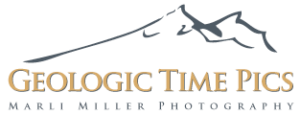Search for any geological feature below
–then click on the image to see a larger version in its correct format, a more detailed caption, and an ID number.

and please, drop me a line if you find this site useful!
*****
SOME POINTERS:
Photos typically include their locations, so you can use locations as keywords too. You get more hits with shorter words, and fewer hits as you become increasingly specific with increasing numbers of keywords. It’s best to use singular rather than plural (eg “volcano” instead of “volcanoes”).
As some words are included in others (“salt” within “basalt,” for example) you might want to be more specific to avoid getting a bunch of irrelevant photos.
Or you can just scroll down and see the most recently added photos… Enjoy!
conglomerate clast in conglomerate

Conglomerate boulder in tilted conglomerate (Arrow) Miocene Furnace Creek Formation, Death Valley National Park, California. (151128-8arrow)
Download ImageConglomerate clast in conglomerate

conglomerate boulder in conglomerate of the Miocene Furnace Creek Formation, Death Valley National Park, California. (3130-27)
Download ImageGlacial outwash, Alberta, Canada

Glacial outwash below Athabasca Glacier. Athabasca River in Jasper National Park, Alberta (120709-123)
Download ImageTilted conglomerate

Tilted conglomerate in Miocene Furnace Creek Formation, Death Valley National Park, California. (151128-3)
Download ImageBoulders on alluvial fan, CA

Boulders on alluvial fan, Death Valley National Park, California. (IMG_1345)
Download ImageCretaceous conglomerate, Montana

Conglomerate of the Cretaceous Kootenai Formation, SW Montana. (3528-38)
Download ImageRecycled Cretaceous pebbles, Montana.

“Recycled” pebbles. These pebbles weathered out of a conglomerate at the base of the Cretaceous Kootenai Formation, SW Montana. (151209-4)
Download ImageTilted Paleozoic rock, CA (Pan)

Hiker and tilted Paleozoic rock, Death Valley National Park, California.
Download ImagePegmatite intruding Gneiss

Pegmatite intruding Precambrian Gneiss as a dike (left side) and sill (middle). Death Valley National Park, California. Ig-08.
Download ImageDeath Valley Salt Pan at Sunrise

Death Valley’s salt flats and teepee structure. Most of the salt is haltite, although other evaportie minerals are present along the edges. (5D-1325)
Download Imageimpinging grains: dissolution creep

cobbles, impinging into each other because of dissolution creep (pressure solution). Stars on right photo show locations.
Download Imageslabs of polished rock for countertops

slabs of polished rock at a “granite” warehouse (150218-50)
Download Imagemetamorphosed conglomerate (pan)

Polished conglomerate –individual cobbles are metamorphic rocks. The green color comes from the mineral chlorite. (150218-44-2)
Download Imagemetamorphosed conglomerate

Close-up view of metaconglomerate. Green color comes from the metamorphic mineral, chlorite. Note impinging grains from dissolution creep. (150218-40-2)
Download ImageHaystack Rock, Cannon Beach, OR

Haystack Rock, a sea stack of Columbia River Basalt Group at Cannon Beach, Oregon coast. (130121-12)
Download ImageSilver Falls State Park, Oregon

Upper North Falls at Silver Falls State Park, Oregon. The roof of the alcove consists of Wanapum Basalt, the bedrock near the river channel consists of Grande Ronde Basalt. (150119-7F)
Download ImageCRBG and Mt. Adams

Lava flows of the Columbia River Basalt Group in northern Oregon and Mt. Adams of southern Washington. (140711-47-2)
Download ImageColumbia River Basalt Group, Oregon

Basalt flows of the Columbia River Basalt Group, Imnaha Canyon, (120623-22)
Download ImageColumbia River near Portland, Oregon

Aerial view northward, down the Columbia River.(150101-240
Download Image
Aerial view over the Columbia River Gorge to the Washington High Cascade Volcanoes. left to right: Mt. St. Helens, Mt. Rainier, Mt. Adams. (150101-216)
Download Image

You must be logged in to post a comment.